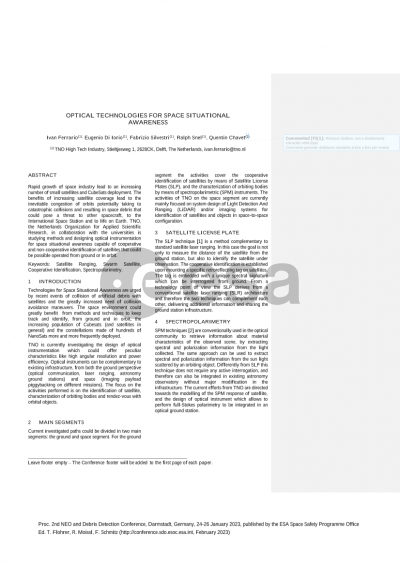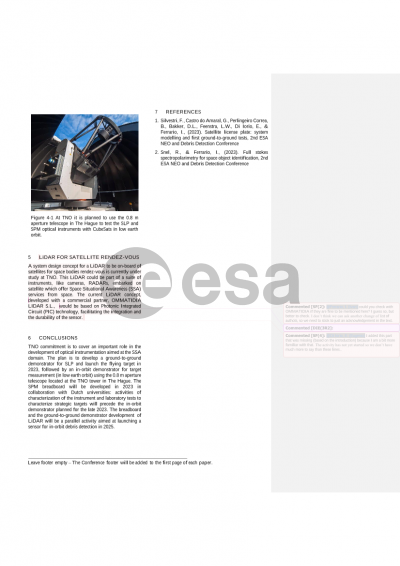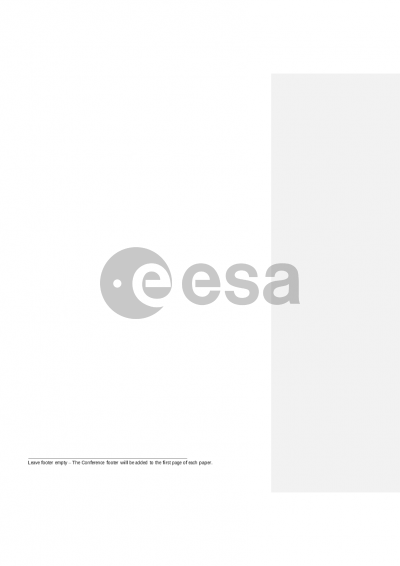Document details

Abstract
Technologies and methods for space situational awareness are urged by recent events of collision of artificial debris with satellite. The set of methods involved aimed at enabling a better management of the Earth’s orbital space should be as broad as possible, including GPS retrieving, radar signaling and optical techniques. Within the cooperation between TNO, the Netherlands Organization for Applied Scientific Research, and the faculty of Aerospace Engineering of TU Delft, several optical techniques are currently investigated.
The use of optical technologies offer some peculiar characteristics like high angular resolution and power efficiency. Moreover, optical instruments can be complementary to existing infrastructure, from both ground perspective (optical communication, laser ranging, astronomy ground stations) and space (imaging payload piggybacking on different missions). The focus on the activities performed is on the identification of satellite, characterization of orbiting bodies and rendez-vous with orbital objects.
Current investigated paths could be divided in two main segments: the ground and space segment. For the ground segment the activities cover the cooperative identification of satellites by means of Satellite License Plates (SLP), and the characterization of orbiting bodies by means of spectropolarimetric (SPM) instruments. The activities of TNO on the space segments are currently mainly focused on system design of Light Detection And Ranging (LiDAR) and/or imaging systems for identification of satellites and objects in space-to-space configuration.
The SLP technique is a method complementary to standard satellite laser ranging. In this case the goal is not only to measure the distance of the satellite from the ground station, both also to identify the satellite under observation. The cooperative identification is established upon mounting a specific retroreflecting tag on satellites. The tag is embedded with a unique spectral signature which can be interrogated from ground. From a technology point of view the SLP derives from a conventional satellite laser ranging (SLR) architecture and therefore the two techniques can complement each other, delivering additional information and sharing the ground station infrastructure.
SPM techniques are conventionally used in the optical community to retrieve information about material characteristics of the observed scene, by extracting spectral and polarization information from the light collected. The same approach can be used to extract spectral and polarization information from the sun light scattered by an orbiting object. Differently from SLP this technique does not require any active interrogation, and therefore can also be integrated in existing astronomy observatory without major modification in the infrastructure. The current efforts from TNO and TU Delft are directed towards the modelling of the SPM response of satellite, and the design of optical instrument which allows to perform full-Stokes polarimetry to be integrated in an optical ground station.
For the space-to-space segment a system study for a LiDAR/Camera system to be mounted on a 1-2U satellite is currently performed. The use of optical imaging in space is not exclusive to conventional technique, but complementary in the sense that can provide visual inspection of the target, and also 3D imaging.
During the conference the general status of the different concepts will be discussed together with future development plans.
Preview





